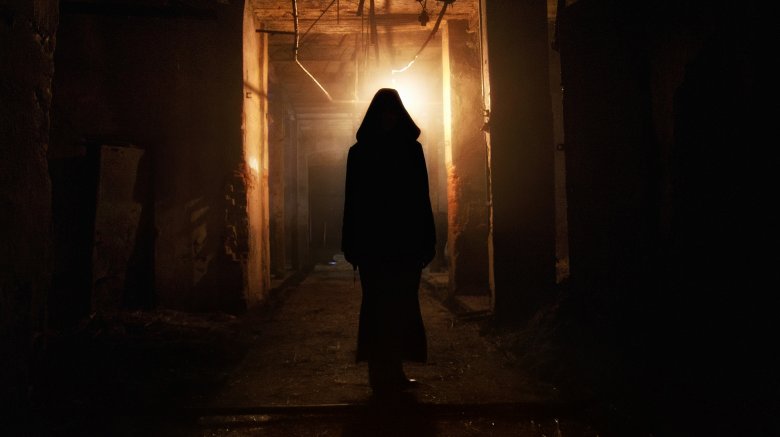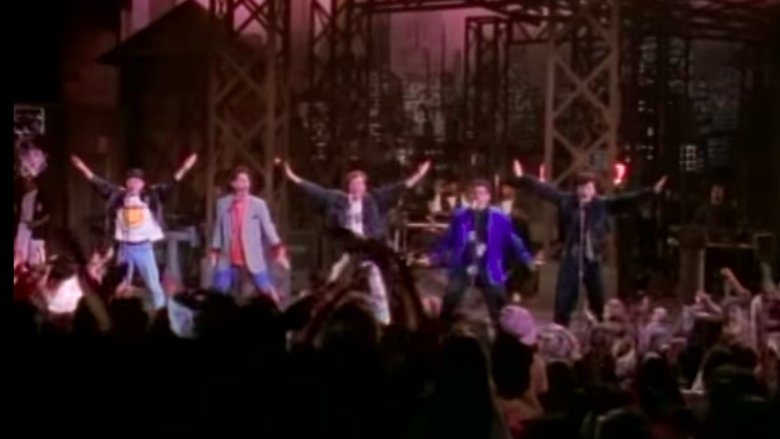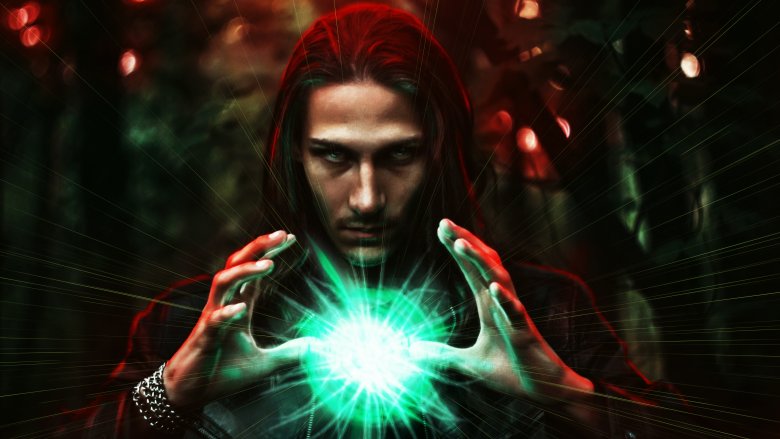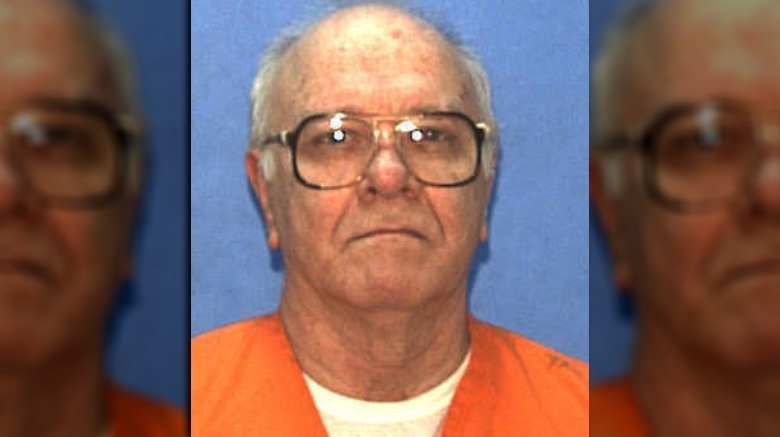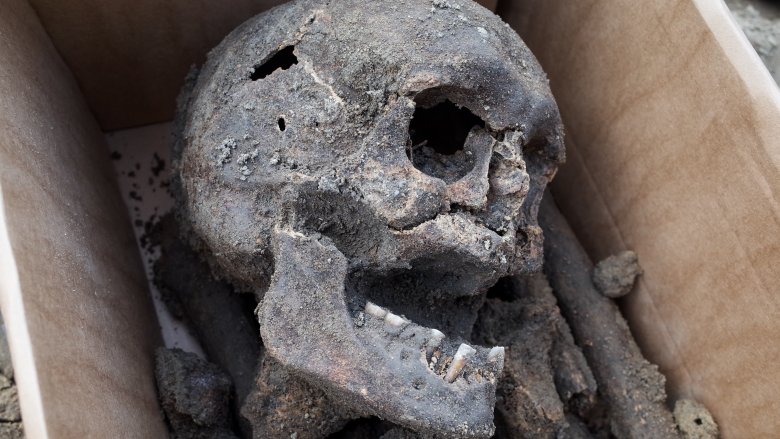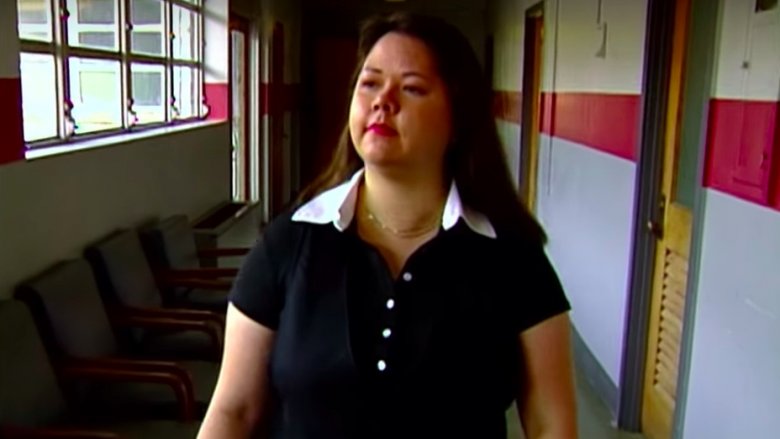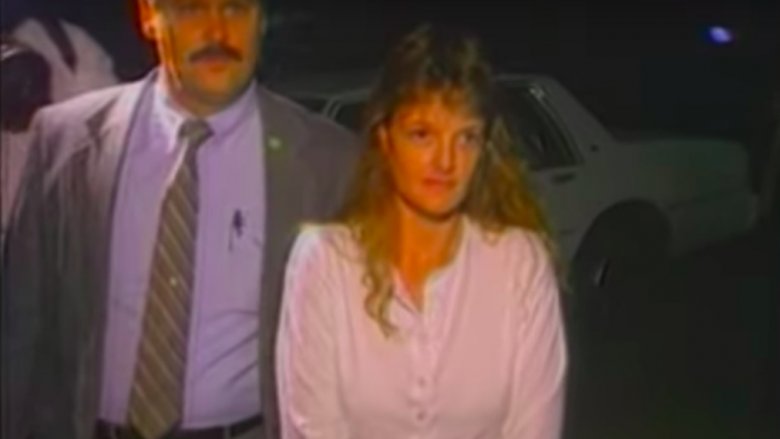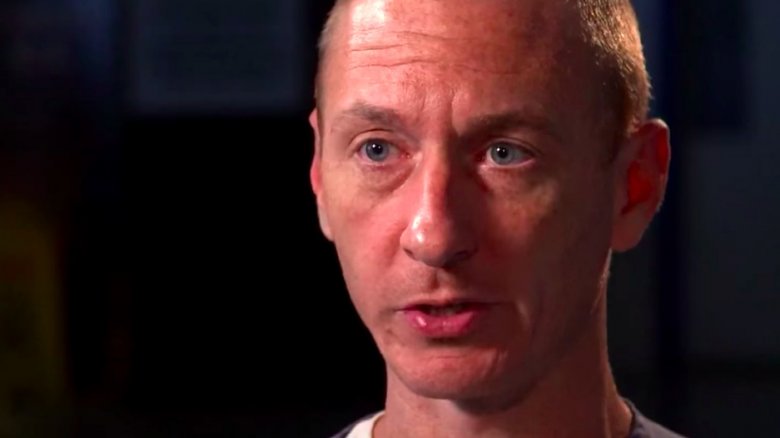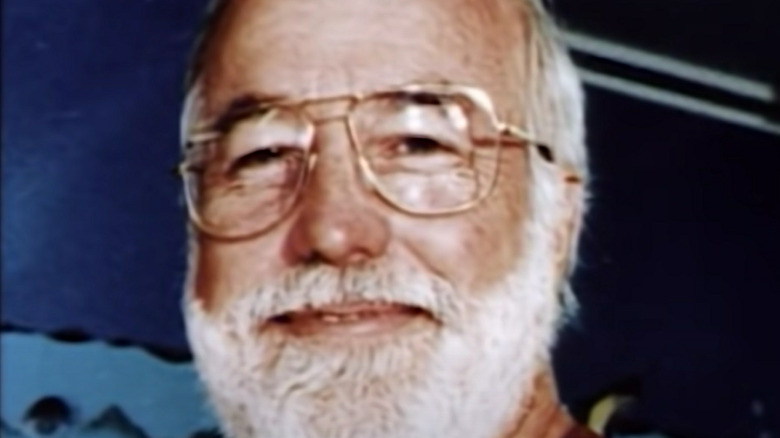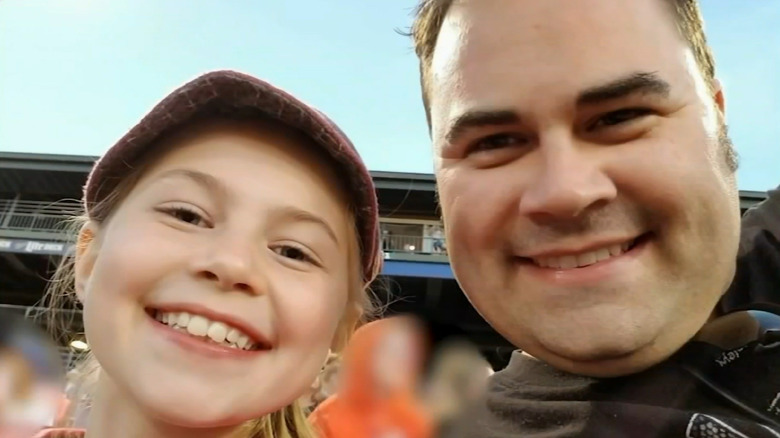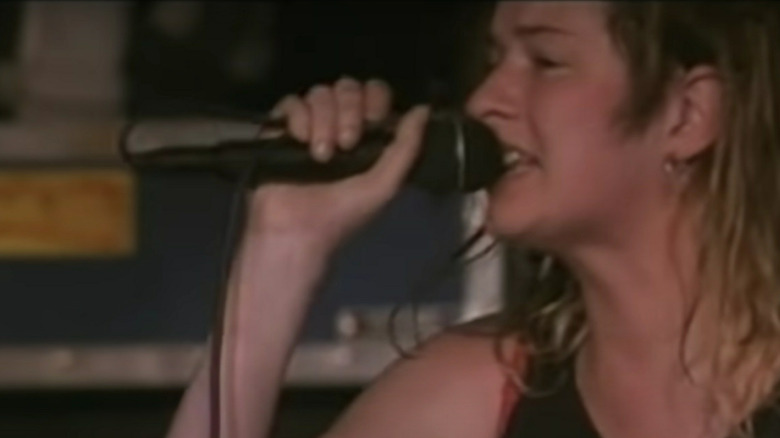Cases From Unsolved Mysteries That Have Since Been Solved
Television gets a pretty bad rap — how many people do you know who have smugly declared their freedom from the "idiot box" while also implying that you are one of the idiots who has been enslaved by said box, just because you like to watch "Game of Thrones" and you once spent 48 hours binge-watching old episodes of "Lost"? Well, despite what those critics and your parents always said, television isn't all bad. In fact sometimes it even does some good.
"Unsolved Mysteries," which premiered in 1987, has featured more than 1,000 unsolved crimes, missing persons, mysterious events, and other unanswered questions. More than half the mysteries presented on the show have since been solved, many of them because of tips from viewers. Conclusion: Not an idiot box. If you don't count any reality TV shows. And most talk shows. Anyway. Here are some of the "Unsolved Mysteries" that have been cleared up.
Psst, wanna buy a baby?
Georgia Tann thought it was okay to take babies from poor and unwed mothers, as long as you gave them to wealthy couples. Well, "gave" is kind of a strong word, more like "sold," but that $750 adoption fee definitely helped her feel less guilty.
According to the L.A. Times, Tann's black market baby business was in operation from the 1920s to the 1940s, and it's estimated she took more than 5,000 babies from their parents. Tann used her position as the county director of the Tennessee Children's Home Society to gain trust and avoid prosecution, and parents who fought back found themselves up against judges who were on Tann's payroll. And so she got away with this for decades — she died in 1950, just three days before investigators finally closed in.
"Unsolved Mysteries" featured the story in December 1989, and the show prompted more than 600 calls from people who thought they might be victims. At least 50 of those cases were solved in the first eight months after the program aired, including Lynn Heinz, who was "sold to a doctor" at the age of 5, and Sandra Kimbrell, whose mother was told she'd died of pneumonia after Georgia Tann took her to a hospital "for a checkup." Any way you look at it, this story only has a happy ending for the sole fact that many of these people learned the truth.
The missing fan
The worst unsolved mysteries always involve missing children, and these stories are so much more heartbreaking when the child's parents find renewed hope, only to have the horrible truth revealed.
Sixteen-year-old Kari Lynn Nixon disappeared in 1987 in her own neighborhood. Her case was featured on "Unsolved Mysteries" in May 1989, but the story failed to produce any good leads.
A few years afterward, Nixon's mother was watching a New Kids on the Block video (remember them?) when she spotted a girl in the audience who she thought looked just like her daughter. Nixon was a fan, so it seemed plausible that the girl might have actually been her. Nixon's story made it into a second episode of "Unsolved Mysteries," which featured the video clip. New Kids on the Block got involved, asking the girl to step forward. And then the girl did come forward, but it wasn't Nixon.
The truth about Nixon's disappearance was finally revealed in 1994, when her killer confessed to the crime. According to the Press-Republican, bank robber Robert Jones made a deal with prosecutors: Information about Nixon's death in exchange for a lighter sentence for his wife, who drove the getaway car during a robbery. As it turned out, Jones had abducted, raped, and murdered Nixon while she was on her way home. He buried her in a shallow grave just a few miles from her house.
That time the psychic was actually right
Everyone pretty much knows psychics are frauds, because duh, of course they are. And then you read a story like this one and you're not so sure anymore.
In 1994, "Unsolved Mysteries" featured the story of John and Nancy Bosco, who were found murdered in their home in Ferndale, Montana. According to the Missoulian, when the police failed to come up with much in the way of leads, John Bosco's mother called a psychic — a guy named Dannion Brinkley who, much like The Flash, got superpowers when struck by lightning. Brinkley said the killer knew the Boscos and that he was familiar with their home, which wouldn't be that shocking, but then he said that the killer was young, male, a student at a western college, and would be caught in December 1993, which is considerably more specific.
Then in December 1993, Joseph Shadow Clark (yes, his real name) told fellow students at George Fox College in Oregon that he'd killed people, which is kind of a weird confession to make at a Christian college because of the whole Ten Commandments thing, but whatever. Anyway, Clark was arrested, the case was solved, and "Unsolved Mysteries" ran the story in October 1994 — yes, after the killer was caught — but the real mystery as far as the show was concerned was how the psychic was so spot-on. Not that it actually helped solve the murder or anything but still. Weird.
The real Bay Harbor Butcher
In this horrible, horrible, horrible story, a mother and her teenage daughters were on vacation in Florida, and then they were found dead in Tampa Bay, bound, gagged, and weighed down with concrete blocks. According to the L.A. Times, the three were on a long road trip from their family farm in Ohio. Along the way, they stopped at The Jacksonville Zoo, SeaWorld, Epcot Center, and Disney's MGM Studios, before accidentally encountering the worst human being on Earth, who offered to take them on a little boat ride around the bay and then raped and murdered all three of them. The only real evidence police had was a note with directions to a local hotel, which was not in the handwriting of any of the victims.
The story was featured on "Unsolved Mysteries" in November 1991, but none of the tips that came in helped at all. After several more years with no leads, police decided to try something that had never been tried before — they put the handwritten note up on a billboard.
Now that just seems like a desperate stab in the dark, until you keep reading and find out that it only took one day before police got handwriting samples of the killer. They identified Oba Chandler and arrested him two months later. He was executed for the crimes in 2011 and has since been linked to other similar crimes.
'Gabby's bones'
When Gabby (not his real name) moved away from Thermopolis, Wyoming, he left some stuff with his friend Newell Sessions, including a trunk with a lock on it.
Now, if someone you know left you a trunk with a lock on it and didn't come back for six years, what would you do? Don't say you wouldn't open the trunk — you totally would. Anyway, Newell Sessions opened the trunk and found a human skeleton inside it. But instead of calling the police, Sessions figured he should call Gabby, you know, to give him time to come up with a cover story or get disappeared.
Gabby told Sessions he'd purchased the trunk at a yard sale and had no idea what was in it, which would mean he had way, way better self control than his friend did. So Sessions called the police, and the police figured out the guy in the trunk had been murdered, but that was all they could come up with. Then Gabby died by suicide.
The case appeared on "Unsolved Mysteries" in February 1993. According to the Global Dispatch, a viewer told detectives her uncle murdered her father in 1960 and buried him in a trunk. Evidently, the killer then unburied the trunk, took it to Wyoming, and left it at Newell Sessions' house. DNA samples confirmed the skeleton was the woman's father, whose name was Joseph Mulvaney.
Radio confessions
When you're a DJ and you host a show segment called "Confess Your Crimes," at some point you're probably going to get a call that's out of bounds for a morning radio show.
In 1991, two morning DJs at the Los Angeles radio station KROQ did a bit where they encouraged listeners to call in with stories of horrible crimes — you know, like cleaning a toilet with a roommate's toothbrush or knocking over an enemy's mailbox. Then one morning, a guy called in with a rambling confession about a murder. Now, no matter how not-serious your radio show might be, if someone calls you to confess a serious crime, you've got an obligation to go to the police, so that's what they did.
The confession also found its way to "Unsolved Mysteries," which aired it twice. Police were overwhelmed with tips — according to the L.A. Times it took several weeks to work through hundreds of leads. Some of the leads came from the grieving families of murdered loved ones.
You can guess what happened next: The radio station got suspicious and conducted an internal investigation, and — surprise — it turned out that the whole thing was a hoax, fabricated to gain publicity for the morning show. The two DJs were fined $12,170 for the 149 hours police spent trying to solve the crime. Ouch.
Amnesia?
Imagine waking up in New Orleans and having no idea who you are. Don't worry if that's a scary thought because (spoiler) it might not have actually happened. But one woman did a pretty good job convincing everyone it had.
The woman, who sort of thought her name might be "Gigi" was found wandering around the streets of New Orleans in 1995 carrying a bunch of really weird stuff, including four pairs of scissors and a gold-plated table setting. She spent four months in a psychiatric clinic, then at some point someone got the bright idea to call "Unsolved Mysteries," which must have been terrifying since once her identity was established she was going to have a pretty big medical bill to pay.
According to the Associated Press, a former coworker saw her on the show, called, and poof, she was Belinda Lin. But her family was skeptical of her story — they said she'd been diagnosed with schizophrenia at the age of 18 and had been off her medication for years. Her father also told a reporter that he'd "like to find out what happened to her that was so terrible that she decided she had to forget everything." He also implied that he really didn't want to deal with her emotional problems. So hands wiped clean! And that's how you handle emotions, kids.
Murder by genetic disorder
The only thing worse than the death of your child is when the police accuse you of being responsible for it. According to the Bluhm Legal Clinic, in 1989 3-month-old Ryan Stallings was found to have high levels of ethylene glycol in his bloodstream — that's the chemical found in antifreeze. Since a 3-month-old doesn't have the motor control necessary to accidentally drink antifreeze, doctors suspected poisoning, and the baby was placed in protective custody. He seemed fine until his mother, Patricia Stallings, was allowed to visit him — and then the next day he died.
Stallings, who was pregnant, was arrested and charged with murder. When her second son, David, was born he was immediately placed into protective custody, but then he became sick, too, and similarly high levels of ethylene glycol were found in his blood. The twist — Stallings hadn't been anywhere near him when he sickened.
Because David's doctors weren't incompetent, he was diagnosed with a rare genetic disorder called methylamalonic academia (MMA), which mimics ethylene glycol poisoning. And yet, Stalling's lawyer inexplicably failed to mention any of that at her murder trial, so she was convicted and sentenced to life in prison.
In May 1991, Stallings' story appeared on "Unsolved Mysteries," where it was seen by William S. Sly, a biochemist and molecular biologist. Sly was able to test Ryan's blood and confirm that he'd also died from MMA. Patricia was eventually cleared, and David was returned to his parents.
Because murder is easier than just having a baby
Daphne Boyden was 17 years old when she was murdered in her Vallejo, California, home in 1996. The killers set her body on fire and escaped with her 25-day-old son, Le-Zhan Williams. Witnesses reported seeing two girls leave the scene of the crime, but after that the police had no leads.
The case was featured on "Unsolved Mysteries" in November 1996, but it wasn't until 2002, six years later, when police were finally able to solve the crime. According to SF Gate, an anonymous tip came in not long after the "Unsolved Mysteries" segment was rebroadcast. The killer was Latasha Brown, who, with the help of a cousin, shot Boyden and set the fire to cover her tracks. She originally fled to Texas, where she obtained a fake birth certificate, and then returned to Vallejo and raised the child just two miles from the scene of the crime.
Prosecutors said Brown had had a previous relationship with the baby's father, and jealousy had compelled her to commit the murder and steal the baby. Brown was sentenced to 37 years in prison.
The 37-year-old runaway
Thirty-seven-year-old Susan Bachman suffered from anxiety and depression, and was troubled enough that she agreed to voluntarily commit herself to a psychiatric center in Clarion, Pennsylvania, in July 2014. According to ABC News, while on her way to the center she became agitated and jumped out of her parents' vehicle at roughly 50 mph. Witnesses saw her roll as she hit the ground, then stand and flee into the woods.
Bachman's parents called the police and a search and rescue team scoured the woods with dogs and a helicopter. They found Bachman's cell phone and wallet in an abandoned barn, but there was no trace of Bachman. The case was featured on the "Unsolved Mysteries" website in September 2014.
Tips from viewers didn't solve this mystery, just time and police work. In March 2015, Bachman's purse was found in the woods where she was last seen, and the previous September her clothing had been located in the same general area. Police found her skull and jawbone as they were searching the woods with cadaver dogs. The coroner ruled her death accidental — likely the result of injuries sustained when she jumped out of the car.
A happy reunion
Racism has caused more tragedies, both large and small, than just about any other social issue. One of those small tragedies happened in Jamestown in the fall of 1953, when a white woman fell in love with a Black man.
The couple — Eleanor Wozniak and John Elias — lived together secretly and had plans to get married. When Wozniak became pregnant the couple decided to tell her family. "I thought once they knew I was pregnant that it would be accepted and we could get married," she told the Buffalo News. Instead, her father drove Elias off with a shotgun and the words, "No Black bastard is coming in my house."
Wozniak's parents forced her to give the baby, Rose Marie, up for adoption. The couple was separated, until years later when Elias, now married, wondered what happened to Wozniak and set out to find her. After their reunion, they decided to appear on "Unsolved Mysteries" in the hope that someone, somewhere might know the whereabouts of their daughter.
Rose Marie, who was now Sally Lou, was 37 years old and living in Pennsylvania when a friend of her adoptive mother saw the story on television. The family was soon reunited, and then racism in America ended and everyone lived happily ever after. Not really that last part, but Sally Lou was actually engaged to a white man, so times do change. A little.
Interrogation with the vampire
Because the best mysteries always involve whack jobs who think they're vampires, in 1996 Richard and Naoma Wendorf, a middle-age couple in Florida, were "bludgeoned to pulp with a metal bar." The case was featured on "Unsolved Mysteries" in February 1997, but the police already kind of sort of knew who did it.
According to the Independent, police had been investigating a local "vampire cult," starting with a break-in at a dog shelter in which two animals were killed and a third one had to be euthanized because it was injured so badly.
The Wendorf's daughter Heather was involved with 16-year-old Rod Ferrell, who once had to pay $30 in video store late fees because he kept a copy of "Interview with the Vampire" for two weeks. Ferrell was part of a vampire cult that drank human blood and may have had as many as 30 members.
Heather, Ferrell, and three other self-proclaimed vampires were arrested and charged with murder. Heather was later cleared, but Ferrell pleaded guilty, insisting he'd only done it because Heather told him she hated her parents and wanted them dead. He was sentenced to death, which shouldn't have been a problem for him unless it was death by wooden stake or decapitation, but then his sentence was downgraded to life in prison because he was only 16. Except that he told everyone he was 500, so death by wooden stake might have actually been totally appropriate.
Craig Williamson found himself on the show
On August 30, 1993, Craig Williamson went missing from his motel room in Colorado Springs. Williamson lived in Olympia, Wisconsin, with his second wife, Christine Reinhard. They lived off of Williamson's fish farm business, selling tilapia to restaurants and other buyers. Williamson was in Colorado Springs on business when he vanished. His motel bed hadn't been slept in, most of his effects were still in the room, and his car was found in Mexico.
Reinhard, who described Williamson as a devoted and loving husband, suspected that her husband suffered from amnesia. He'd had a concussion that July; if he were hit on the head, perhaps by muggers, he might have forgotten his life and headed to his former home in the Pacific Northwest. Reinhard pointed to a possible sighting of Williamson in Montana as evidence, but police maintained that the scenario was highly unlikely. But she continued to pursue her theory, and her quest for her husband included appearing on "Unsolved Mysteries" to get the story out.
Among those watching the episode about Williamson, aired on May 25, 1994, was the man himself, who was living in Key West, Florida. Williamson contacted Reinhard and his first wife after seeing the program, which alerted the authorities to his presence. The story he told matched Reinhard's theory, and he claimed not to remember their time together. Police had doubts about his amnesia, but with no clear crime, they didn't investigate further.
Kayla Unbehaun turned up in North Carolina
On July 4, 2017, 9-year-old Kayla Unbehaun vanished from her hometown of Wheaton, Illinois. Her parents, Ryan Iskerka and Heather Unbehaun, were separated, and Iskerka had full custody of their daughter. When Iskerka went to pick up Kayla from her mother's house after a Fourth of July parade, they weren't home. Police began a search, and information was made public to help in identifying Heather and Kayla, but the case was still open in November 2022, when the Netflix version of "Unsolved Mysteries" featured it in an episode.
An employee at a shopping mall in North Carolina who had seen the episode thought she recognized Kayla and Heather in her shop. She made a report to the authorities, who arrested Heather on fugitive charges. She later traveled to Kane County, Illinois, to surrender. Kayla, 15, was returned to her father in May 2023, and Heather is facing child abduction charges.
Years after her death, Mia Zapata's killer was found
For a brief moment in the early 1990s, the Gits seemed poised to be the next punk band from Seattle to break into the big time. Their frontwoman, 27-year-old Mia Zapata, was a well-loved member of the local music scene. Her murder on July 7, 1993, deeply shook Seattle, with some finding the impact of her death outweighing even Kurt Cobain's, opined The Village Voice. "Unsolved Mysteries" wasn't the only program to run an episode on Zapata. "Dead of Night" and "48 Hours" also looked into the case, as did a documentary on the Gits. Police looked into the possibility of an attack by a local cab driver and a reported scream in a nearby area from Zapata's last known location. But the murder remained unsolved for nearly a decade.
In 2002, DNA samples pulled from Zapata's body were matched to Jesus Mezquia, who by then lived in Florida. He had an extensive criminal record from his arrival in the U.S. from Cuba, including assault. At the time of Zapata's murder, Mezquia was living in Seattle with a girlfriend, who was not home the night of the killing. Mezquia was found guilty of first-degree murder and sentenced to 36 years. He wouldn't live to see life outside prison again; he died in 2021 at the age of 66.
